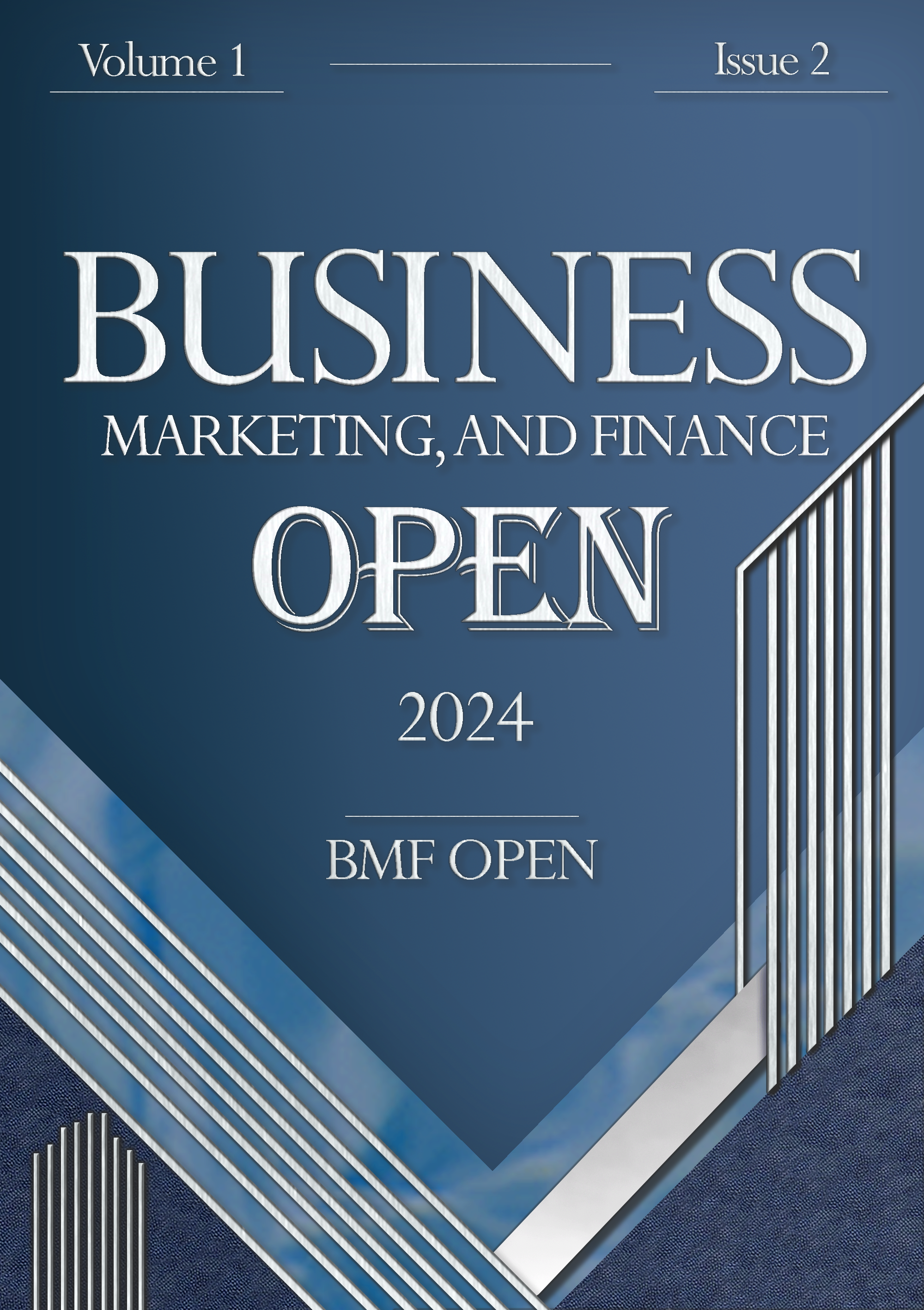The Impact of Financial Flexibility on the Resilience of Small and Medium Enterprises in the Face of Economic Shocks
Keywords:
Financial Flexibility, Economic Shock, Financial Resilience, Small and Medium Enterprises, SMEAbstract
Given the global economic instability and the increasing intensity of economic shocks, assessing and enhancing the financial resilience of small and medium-sized enterprises (SMEs) has become one of the main priorities for policymakers and economic researchers. This study was conducted with the aim of examining the impact of financial flexibility on the resilience of SMEs when confronted with economic shocks. The research employed a quantitative approach and utilized a mixed-methodology design. The statistical population included 120 Iranian SMEs in the manufacturing, service, and commercial sectors in the year 2024, from which 30 companies were selected as a sample using stratified random sampling and Cochran’s formula. The data collection tool was a researcher-made questionnaire comprising 30 items based on a Likert scale. The content validity of the questionnaire was confirmed by expert judgment, and its reliability was verified with a Cronbach’s alpha coefficient of 0.89. Data were analyzed using structural equation modeling in SmartPLS software after assessing normality through the Kolmogorov-Smirnov test. Model fit was evaluated using indices such as GFI, NFI, CFI, TLI, and RMSEA, and the significance level of path coefficients was tested through the Bootstrap method with 5000 random samples. This study investigated three main variables: financial flexibility, financial resilience, and economic shocks. Financial flexibility had a positive and significant effect on financial resilience (β = 0.72, p = 0.001). Financial resilience played a significant role in reducing the negative impacts of economic shocks (β = -0.38, p = 0.002). Economic shocks had a negative and significant effect on financial flexibility (β = -0.45, p = 0.003), indicating the vulnerability of companies to economic fluctuations. The analysis of factor loadings showed that indicators such as liquidity (λ = 0.85), financial stability (λ = 0.80), and exchange rate volatility (λ = 0.90) played a key role in measuring latent variables. Model fit indices were also at an acceptable level (CFI = 0.97, RMSEA = 0.05), confirming the validity and reliability of the model. The findings of this study highlight the importance of enhancing financial flexibility as a strategy to improve financial resilience and mitigate the adverse effects of economic shocks.
References
R. B. Soomro et al., "The adoption of digital technologies by small and medium-sized enterprises for sustainability and value creation in Pakistan: The application of a two-staged hybrid SEM-ANN approach," Sustainability, vol. 16, no. 17, p. 7351, 2024, doi: 10.3390/su16177351.
M. O. Erdiaw-Kwasie, M. Abunyewah, S. Yusif, and P. Arhin, "Small and medium enterprises (SMEs) in a pandemic: A systematic review of pandemic risk impacts, coping strategies and resilience," Heliyon, vol. 9, no. 10, 2023, doi: 10.1016/j.heliyon.2023.e20352.
Y. Sidani, Routledge Handbook on Business and Management in the Middle East. Routledge, 2024.
X. Wang et al., "A Survey on Security of UAV Swarm Networks: Attacks and Countermeasures," ACM Computing Surveys, vol. 57, no. 3, 2024, doi: 10.1145/3703625.
Y. Lee, J. Kim, S. Mah, and A. Karr, "Entrepreneurship in times of crisis: A comprehensive review with future directions," Entrepreneurship Research Journal, vol. 14, no. 3, pp. 905-950, 2024, doi: 10.1515/erj-2022-0366.
A. W. Bartik, M. Bertrand, Z. B. Cullen, E. L. Glaeser, M. Luca, and C. T. Stanton, "How are small businesses adjusting to COVID-19? Early evidence from a survey," 2020, doi: 10.3386/w26989.
N. Bloom, "Fluctuations in uncertainty," Journal of economic Perspectives, vol. 28, no. 2, pp. 153-176, 2014, doi: 10.1257/jep.28.2.153.
M. Campello, J. R. Graham, and C. R. Harvey, "The real effects of financial constraints: Evidence from a financial crisis," Journal of financial Economics, vol. 97, no. 3, pp. 470-487, 2010, doi: 10.1016/j.jfineco.2010.02.009.
M. Cowling, N. Lee, and E. Ughetto, "The price of a disadvantaged location: Regional variation in the price and supply of short-term credit to SMEs in the UK," Journal of Small Business Management, vol. 58, no. 3, pp. 648-668, 2020, doi: 10.1080/00472778.2019.1681195.
E. F. Brigham and P. R. Daves, Intermediate financial management. Cengage Learning, 2019.
E. F. Brigham and J. F. Houston, Fundamentals of financial management. Cengage Learning, 2019.
D. J. Teece, G. Pisano, and A. Shuen, Dynamic capabilities and strategic management. 1997, pp. 509-533.
D. Hillier, eBook: Corporate Finance 5e. McGraw Hill, 2024.
S. S. F. Jannati Asl, "Examining the Moderating Role of Trade Credit on the Relationship Between Financial Flexibility and Bankruptcy of Companies Listed on the Tehran Stock Exchange.," New Research Approaches in Management and Accounting, vol. 8, no. 28, pp. 1571-1585, 2024. [Online]. Available: https://majournal.ir/index.php/ma/article/view/2450.
A. Kuckertz et al., "Startups in times of crisis-A rapid response to the COVID-19 pandemic," Journal of Business Venturing Insights, vol. 13, p. e00169, 2020, doi: 10.1016/j.jbvi.2020.e00169.
M. Mayor and R. Ramos, "Regions and economic resilience: New perspectives," Sustainability, vol. 12, no. 11, p. 4693, 2020, doi: 10.3390/su12114693.
R. P. D. Brito, A. K. Lenz, and M. G. M. Pacheco, "Resilience building among small businesses in low-income neighborhoods," Journal of Small Business Management, vol. 60, no. 5, pp. 1166-1201, 2022, doi: 10.1080/00472778.2022.2041197ER -.
K. Anjorin, T. Ijomah, A. Toromade, A. Akinsulire, and N. P. Eyo-Udo, "Evaluating business development services' role in enhancing SME resilience to economic shocks," Global Journal of Research in Science and Technology, vol. 2, no. 01, pp. 029-045, doi: 10.58175/gjrst.2024.2.1.0047.
R. Mishra and R. K. Singh, "A systematic literature review on supply chain resilience in SMEs: learnings from COVID-19 pandemic," International Journal of Quality & Reliability Management, vol. 40, no. 5, pp. 1172-1202, 2023, doi: 10.1108/IJQRM-03-2022-0108.
M. K. Brunnermeier and L. H. Pedersen, "Market Liquidity and Funding Liquidity," The Review of Financial Studies, vol. 22, no. 6, pp. 2201-2238, 2009, doi: 10.1093/rfs/hhn098.
M. M. Cornett, J. J. McNutt, P. E. Strahan, and H. Tehranian, "Liquidity risk management and credit supply in the financial crisis," Journal of Financial Economics, vol. 101, no. 2, pp. 297-312, 2011, doi: 10.1016/j.jfineco.2011.03.001.
X. Sheng and Y. An, "The nonlinear impact of financial flexibility on corporate sustainability: Empirical evidence from the Chinese manufacturing industry," HeliyonDO - 10.1016/j.heliyon.2024.e27825, 2024.
M. Beigi Siassal, C. Aminpanah, and M. Khatiri, "Analyzing the Impact of Intellectual Capital on Financial Flexibility with Emphasis on the Moderating Role of Tax Avoidance and Financial Leverage of Companies.," in First National Conference on Modern Applied Research in Business and Industrial Development, June 10, 2024 2024. [Online]. Available: https://civilica.com/doc/2037857.







